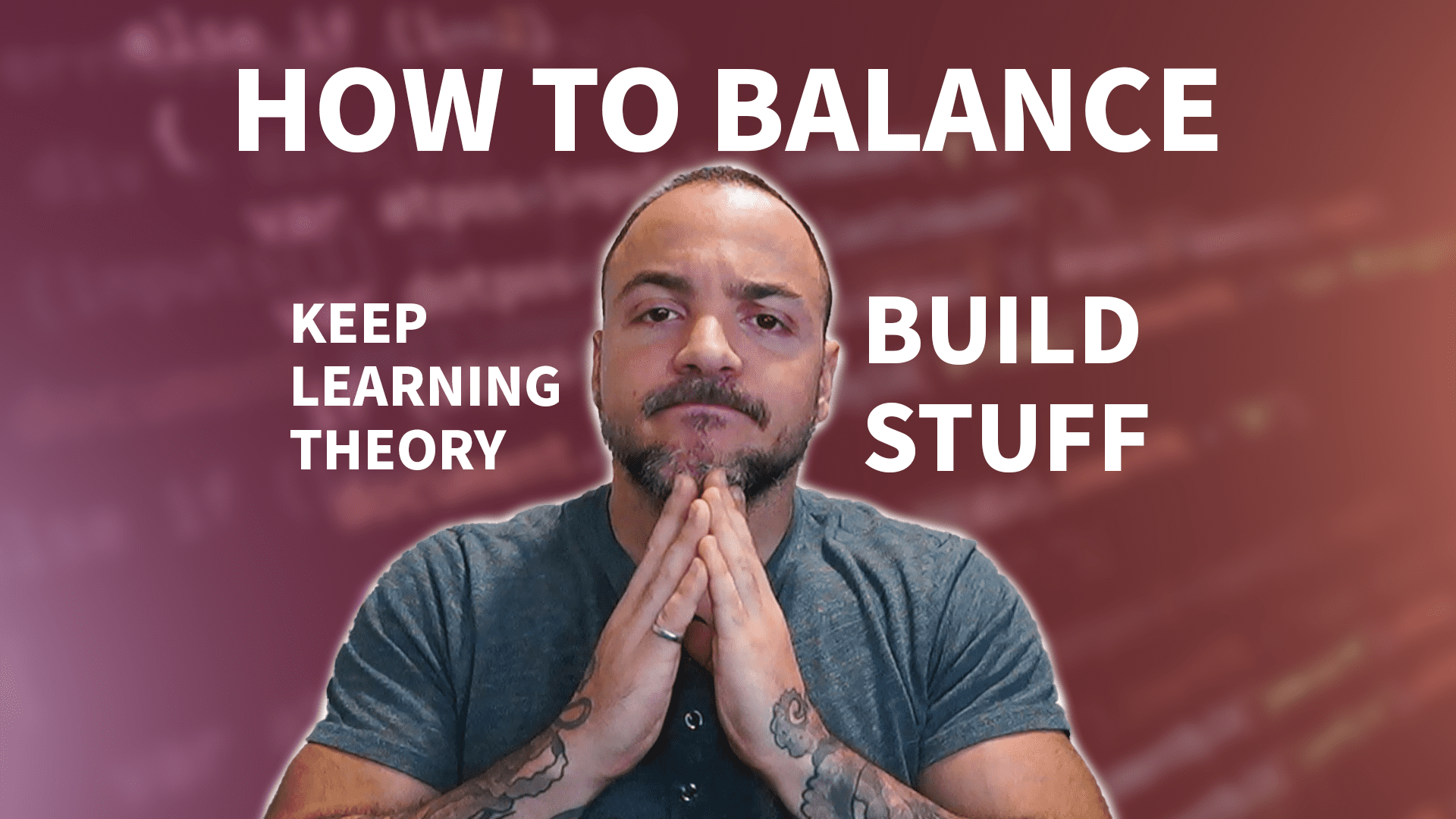As a beginner programmer, have you ever struggled with how much time to spend learning versus actually writing code? You're not the only one. And this isn't a coder-exclusive club, either. It's like deciding between learning about soccer by reading and actually kicking a ball. Is there a balance to be struck between how you actively learn and practical application?
So, you've watched a bunch of coding tutorials, skimmed some blogs, or even finished a boot camp (props to you!). That's your starting point. But to really get going, you've got to start coding. Think of it as practice--practical application of what you've been learning about. You can't just read about it and expect to be a pro. You need to get in there, make mistakes, debug, and play with different programming languages to truly get the hang of it.
But why not just stick to theory? Imagine trying to learn Italian by only memorizing words without ever saying "Ciao!" to someone. It's not the same, right? If you've never tried learning a language, ask a friend who "kind of" knows French but struggles to order coffee. I'm definitely in this camp. If they actively learn but aren't mixing in practical application, it doesn't stick. And at this point, I barely know any French. Coding is similar. You've got to interact with your software, find and fix bugs, and keep going. Every little hiccup and success with your code is a step forward.
However, don't go overboard too quickly. Start with the basics, understand the foundation, and then build on it. As you code, even simple programs, you're training your brain, making it easier to grasp more complex stuff later on. Ready to get started? Let's dive in!
Actively Learn vs Practical Application: Striking a Balance
So, you're diving deeper into the coding world, and suddenly, it feels like you're drowning in a sea of tutorials, articles, and "10-hour complete guide" videos. The internet is a buffet of coding resources, and you're probably wondering, "How much should I eat and when do I actually start cooking?"
Let's break it down with a simple analogy. Think of building a treehouse. You can have all the fancy blueprints, but unless you pick up a hammer and nails, that treehouse is staying in dreamland. In our coding universe, those articles and tutorials are your blueprints, and getting your hands dirty with code? That's your treehouse coming to life.

Now, everyone's coding journey is their own adventure. Some might want to camp out in theory land for a while, soaking up all the knowledge. Others? They're the jump-right-in types, learning as they go, probably breaking a few things along the way. Honestly, for me, that's half the fun.
Have any DIY projects you did just for kicks? In coding, those are your playgrounds. Dive into new tools, mess around with unfamiliar tech, and just see what happens. No pressure, no grades, just pure exploration. But when you're building something for real, especially if it's for work, you might want to stick to what you know. It's like choosing between trying a new recipe or cooking your signature dish when you have guests over. Probably don't want to risk it!
For all the newbies out there, here's a tip: start by playing around. Get your hands on some code, make mistakes, have a laugh, and learn. Once you've got the hang of it, then you can dive into the nitty-gritty details. And while it's super cool (and important) to keep up with the latest in coding, it's just as crucial to actually code. That's the secret to building mastery: doing.
From Reading Books & Blogs to Coding Ninja
So, you've got the basics of coding down. Nice! That's absolutely something to pause, reflect on, and be proud of. But now you're standing at the crossroads, wondering, "When do I stop playing in the sandbox and start building real castles?" It's the age-old question of when to shift from learning mode to something more like "As a professional, look at these incredible things I have built". And trust me, it's a game-changer.
Here's a little secret: don't aim for perfection right out of the gate. Think of your early coding days as dress rehearsals. You're trying on different roles, seeing what fits, and maybe even messing up a few lines. And that's okay! Jumping straight into the spotlight with a half-baked app? Might not be the standing ovation you're hoping for. Instead, focus on the behind-the-scenes work: learn, experiment, tweak, repeat. And remember our "failures" are also some of the best learning experiences... so if something flops don't let that discourage you.
But here's the exciting part: as you get the hang of things, you'll start feeling that itch. The itch to share your creations with the world. And no, I'm not just talking about apps that make you money (though that's cool too). Your 'audience' could be anyone who checks out your website, plays around with your app, or uses that nifty tool you coded up.
Finding the sweet spot between learning and launching is sort of like surfing. Too early, and you'll wipe out. Too late, and you'll miss the wave. Every coder's ride is unique. Some might be riding the big waves super quick, while others are chilling, perfecting their technique. But the only way to actually master the waves is to actually surf them. If you're still looking for some projects to learn with, check these out:
Summarizing the Learning and Application Journey
Starting out in the coding world can feel a bit like being thrown into the deep end of a pool. Everywhere you look, there's an infinite number of tutorials, articles, and "ultimate guides" waving at you. But here's the thing: while learning is super important, it's only half the story. The real fun begins when you move from just absorbing information to actually putting it to use.
And my recommendation? Start applying it as soon as possible. And it's true that every coder's journey is unique so the key is to find your rhythm. Start with small projects, play around, make mistakes, and learn from them. It's all part of the process. Time spent writing code won't be wasted if your focus is on learning and applying new concepts.
As you grow and evolve, the challenges shift. It's no longer just about learning; it's about delivering real, tangible results. This is where strategy comes into play. You'll need to be picky about what and when you learn, focusing on what your projects or users really need. It's a dance between staying updated and actually getting stuff done. If your business relies on delivering value to customers, you may want to be considerate of that and leverage patterns and practices that have worked well for you.
Whether you're a newbie just starting out or a seasoned pro, remember to enjoy the ride along the way on your coding journey. You can boost it by checking out my newsletter for weekly updates right to your inbox or heading over to my YouTube channel for all sorts of software engineering videos.
